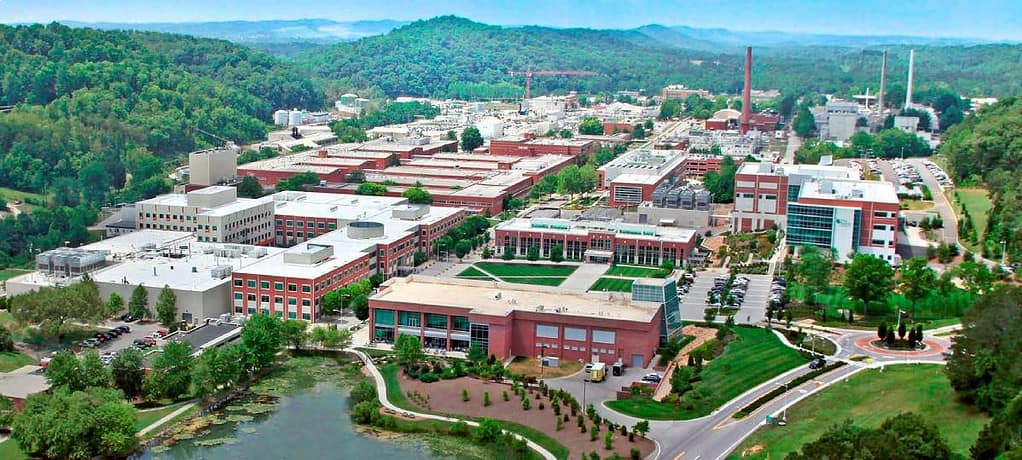When Femi Omitaomu boarded a plane for India in late March, he was not just attending another international workshop – he was representing more than a decade of innovation from Oak Ridge National Laboratory and helping shape the future of energy innovation and infrastructure on a global stage.
Femi, a distinguished research staff member in ORNL’s Computational Sciences and Engineering Division, was invited to present at a high-level technical workshop in New Delhi – an event co-hosted by the U.S. and Indian governments. His presentation focused on a specialized tool developed at ORNL known as OR-SAGE (Oak Ridge Siting Analysis for power Generation Expansion). The geospatial decision-support system helps governments, industry, and energy planners determine the most viable locations for building new energy infrastructure, including nuclear power plants and other energy facilities.
Developed for use within the United States, the tool has supported a range of federal planning initiatives and energy siting analyses across the continental United States. Its success has demonstrated the potential for broader application in global settings, particularly or countries seeking to scale up their advanced reactor programs. “We are using our science to promote the safe and secure siting of advanced nuclear reactors worldwide,” Femi said.
“This tool has been in development for over 15 years,” Femi said. “We started it to address the need for a standardized, data-driven way to identify optimal siting locations for power generation. What began as a nuclear siting tool has evolved into something much broader.”
Femi’s presentation – slated as the opening talk of the two-day workshop – set the tone for the discussions that followed. The tool’s ability to rapidly assess potential locations based on regulatory constraints, environmental considerations, and infrastructure readiness captured the attention of attendees. “There is nothing like this tool available in India right now,” Femi explained. “So the interest was immediate. They wanted to know how something similar could be developed to support their national energy strategy.”
The impact of OR-SAGE goes well beyond nuclear. Over the years, it has been adapted to support the siting of data centers and other critical infrastructure. “It’s a flexible framework,” Femi said. “We’ve integrated it into several DOE web tools, and it uses authoritative data sources to give decision-makers a high-confidence assessment of where to build—and where not to.”
The success of the tool is the result of strong collaboration and leadership. Ongoing support from Andy Worrall, Senior Program Manager for Nuclear Technology Innovation, along with technical expertise from team members including Randy Belles, Senior Reactor Licensing and Safety Analyst, and Brandon Miller, Data Engineer, has played a key role in shaping OR-SAGE’s continued growth and relevance.
For Femi, this workshop was just one stop on a global journey. In the past two years, he has traveled to Thailand, Indonesia, Kenya, and now India, with an upcoming trip to the Philippines later this year. In each country, he’s shared how ORNL’s tools and research can support responsible, efficient siting of infrastructure in ways that respect local context and culture.
“In the US, we factor in things like protected lands and federal property,” Femi noted. “But in other countries, you may need to exclude areas around religious landmarks or account for different types of wildlife or urban development. Every place has its own priorities – and our framework is adaptable to that.”
His trip included a visit to the Taj Mahal and offered moments of cultural immersion that deepened his appreciation for the global significance of his work. “India is a blend of history and the present, and it reminds you that when we’re designing tools for energy siting, we have to account for more than just the physical landscape; we have to consider how people live, worship, and interact with their environment.”
Femi also sees his journey as a testament to perseverance and excellence. “When I started working on OR-SAGE in 2009, I was a postdoc. It wasn’t a high-profile project then. But I put in the work, and the tool has grown with time. Now it’s a foundational resource that the Department of Energy and international partners rely on.”
His advice to early-career scientists? “Even if a project doesn’t seem big at first, treat it like it is. You never know where it will take you. Deliver your best work, and others will take notice.”
This Oak Ridge National Laboratory news article "Omitaomu, OR-SAGE tool help shape energy innovation" was originally found on https://www.ornl.gov/news

